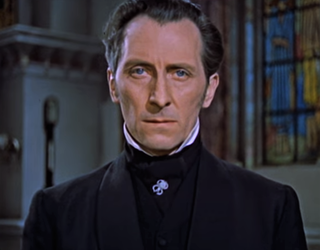
Peter Wilton Cushing was an English actor. His acting career spanned over six decades and included appearances in more than 100 films, as well as many television, stage and radio roles. He achieved recognition for his leading performances in the Hammer Productions horror films from the 1950s to 1970s, and as Grand Moff Tarkin in Star Wars (1977).
Hammer Film Productions Ltd. is a British film production company based in London. Founded in 1934, the company is best known for a series of Gothic horror and fantasy films made from the mid-1950s until the 1970s. Many of these involve classic horror characters such as Baron Victor Frankenstein, Count Dracula, and the Mummy, which Hammer reintroduced to audiences by filming them in vivid colour for the first time. Hammer also produced science fiction, thrillers, film noir and comedies, as well as, in later years, television series.

The Curse of Frankenstein is a 1957 British horror film by Hammer Film Productions, loosely based on the 1818 novel Frankenstein; or, The Modern Prometheus by Mary Shelley. It was Hammer's first colour horror film, and the first of their Frankenstein series. Its worldwide success led to several sequels, and it was also followed by new versions of Dracula (1958) and The Mummy (1959), establishing "Hammer Horror" as a distinctive brand of Gothic cinema.

Dr Terror's House of Horrors is a 1965 British anthology horror film from Amicus Productions, directed by veteran horror director Freddie Francis, written by Milton Subotsky, and starring Peter Cushing and Christopher Lee.

Frankenstein Must Be Destroyed is a 1969 British horror film directed by Terence Fisher for Hammer Films, starring Peter Cushing, Freddie Jones, Veronica Carlson and Simon Ward. The film is the fifth in a series of Hammer films focusing on Baron Frankenstein, who, in this entry, terrorises those around him in a bid to uncover the secrets of a former associate confined to a lunatic asylum.

The Evil of Frankenstein is a 1964 film directed by Freddie Francis. The third instalment in Hammer's Frankenstein series, it stars Peter Cushing, Sandor Elès and Kiwi Kingston.

Curse of the Fly is a 1965 American horror science-fiction film and a sequel to Return of the Fly (1959), as the third installment in The Fly film series. It was released in 1965, and unlike the other films in the series was produced in the United Kingdom. The film was directed by Don Sharp and the screenplay was written by Harry Spalding.
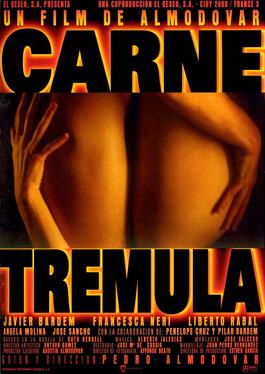
Live Flesh is a 1997 erotic romantic thriller drama film written and directed by Pedro Almodóvar, based on the 1986 novel of the same name by English author Ruth Rendell. The film stars Javier Bardem, Francesca Neri, Liberto Rabal, Ángela Molina and José Sancho, with Penélope Cruz and Pilar Bardem.

Frankenstein and the Monster From Hell is a 1974 British horror film, directed by Terence Fisher and produced by Hammer Film Productions. It stars Peter Cushing, Shane Briant and David Prowse. Filmed at Elstree Studios in 1972 but not released until 1974, it was the final chapter in the Hammer Frankenstein saga of films as well as director Fisher's last film.
Lorna Heilbron is a Glasgow-born Scottish actress.
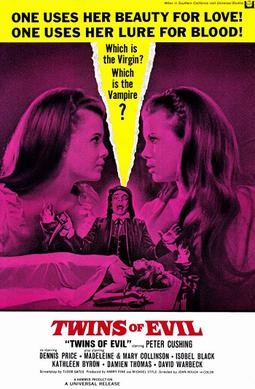
Twins of Evil is a 1971 British horror film directed by John Hough and starring Peter Cushing, with Damien Thomas and the real-life identical twins and former Playboy Playmates Mary and Madeleine Collinson.

The Gingerdead Man is a 2005 American comedy slasher film directed by Charles Band. Gary Busey stars as the titular Gingerdead Man, created from a mix of gingerbread spice mix and the ashes of deceased serial killer Millard Findlemeyer, who terrorizes a small-town bakery. The film also stars Robin Sydney, Jonathan Chase, Alexia Aleman, Margaret Blye, James Snyder, and Larry Cedar.

Legend of the Werewolf is a 1975 British horror film directed by Freddie Francis. It stars Peter Cushing, Ron Moody and Hugh Griffith.

The Skull is a 1965 British horror film directed by Freddie Francis for Amicus Productions, and starring the frequently paired horror actors Peter Cushing and Christopher Lee, alongside Patrick Wymark, Jill Bennett, Nigel Green, Patrick Magee and Peter Woodthorpe.
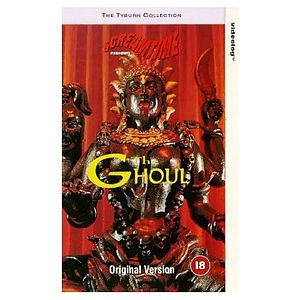
The Ghoul is a 1975 British Tyburn Film Productions horror film directed by Freddie Francis and starring Peter Cushing, John Hurt, Alexandra Bastedo, Veronica Carlson, Gwen Watford, Don Henderson and Ian McCulloch. In the United States, the film was released as Night Of The Ghoul and The Thing In The Attic.
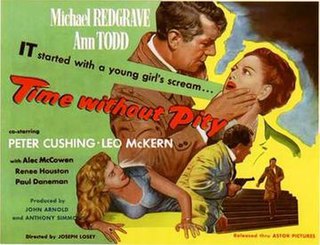
Time Without Pity is a 1957 British film noir thriller film about a father trying to save his son from execution for murder.

Symptoms is a 1974 British psychological horror film directed by José Ramón Larraz and starring Angela Pleasence, Peter Vaughan, and Lorna Heilbron. The film, based on a story by Thomas Owen, follows a woman who goes to stay with a friend at her family remote English manor where all is not as it seems. The film had its premiere at the 1974 Cannes Film Festival as the first official British entry. The film was released under the alternate title The Blood Virgin.

At Freddie's is a 1982 novel by the British author Penelope Fitzgerald. The last of her novels drawing directly on her personal experiences, it focuses on an august but shabby London stage school for children, TheTemple. Fitzgerald had herself been a general studies teacher at the Italia Conti stage school. The school in the novel is known as Freddie's after its elderly principal Freddie Wentworth, a character partly based on that of the impresario Lilian Baylis. The book received mixed reviews on its first UK publication, and on its 1985 appearance in the US.

"Strange Case" is the fourth episode of the sixth season of the American fantasy drama series Once Upon a Time, which aired on October 16, 2016.
Frankenstein is a British horror-adventure film series produced by Hammer Film Productions. The films, loosely based on the 1818 novel Frankenstein; or, The Modern Prometheus by Mary Shelley, are centered on Baron Victor Frankenstein, who experiments in creating a creature beyond human. The series is part of the larger Hammer horror oeuvre.

















